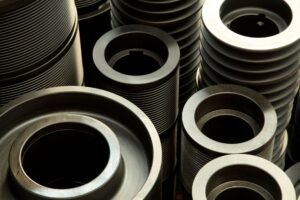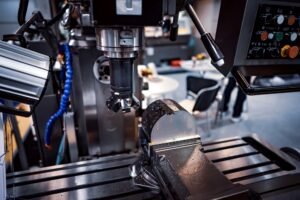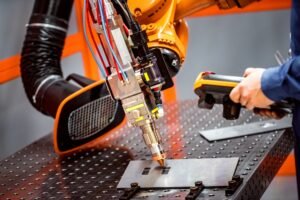Introduction
CNC machining is widely known for its precision and efficiency, but many people are unaware of the detailed steps involved from the initial design to the finished part. Understanding this workflow is essential for engineers, manufacturers, and clients alike. This article will walk you through the complete CNC machining process — from CAD model creation to the final product.
Step 1: Design Creation (CAD Modeling)
Everything begins with a CAD (Computer-Aided Design) model. Engineers or designers use CAD software (like SolidWorks, AutoCAD, or Fusion 360) to create a 3D digital model of the part. This model includes critical dimensions, tolerances, material specifications, and surface finishes.
A good CAD model:
- Minimizes machining complexities.
- Defines essential features clearly.
- Considers manufacturability and cost-efficiency.
Step 2: CAM Programming (Toolpath Generation)
After the CAD model is completed, it moves to the CAM (Computer-Aided Manufacturing) phase. Here, the digital design is translated into machine-readable instructions using CAM software (e.g., Mastercam, Fusion 360, Siemens NX).
Tasks in this phase:
- Selecting appropriate cutting tools.
- Defining toolpaths for each operation (milling, drilling, turning).
- Setting machining parameters like spindle speed, feed rate, and depth of cut.
- Generating the G-code, which will be sent to the CNC machine.
Step 3: Material Selection and Preparation
Choosing the right material is crucial based on the part’s application and performance requirements. Common materials include:
- Metals: Aluminum, Stainless Steel, Titanium.
- Plastics: ABS, Nylon, PEEK.
- Composites: Carbon fiber-reinforced plastics.
The raw material, often called a workpiece or stock, is cut to a manageable size and properly fixtured onto the machine bed or chuck.
Step 4: Machine Setup and Calibration
Before machining begins:
- The CNC machine is calibrated to ensure precision.
- Cutting tools are loaded into the tool holders.
- Zero points (machine origin) are set for accurate positioning.
- Fixturing and clamping of the workpiece are checked to prevent vibrations and displacement.
A dry run (without actual cutting) is often performed to ensure the program runs smoothly without collisions.
Step 5: CNC Machining Operations
Once everything is set, the actual machining begins. Depending on the part’s design, the following operations may be performed:
- Facing: Flattening the surface.
- Milling: Removing material to create pockets, slots, or contours.
- Drilling & Tapping: Creating holes and threads.
- Turning: Rotating the workpiece to cut cylindrical features.
- Boring & Reaming: Finishing holes to tight tolerances.
Multi-axis machines (like 4-axis or 5-axis) enable simultaneous movements, reducing the need for multiple setups.
Step 6: Inspection and Quality Control
After machining, parts are thoroughly inspected to verify:
- Dimensional accuracy (using calipers, micrometers, CMM machines).
- Surface finish quality (Ra values).
- Tolerance compliance.
- Visual defects like burrs or tool marks.
In high-precision industries, inspection reports (FAI – First Article Inspection) are often required before approval.
Step 7: Post-Processing and Finishing
Depending on the application, parts may undergo post-processing steps:
- Deburring: Removing sharp edges or burrs.
- Polishing: Enhancing surface finish.
- Anodizing or Plating: Surface treatments for corrosion resistance.
- Heat Treatment: Improving material hardness or strength.
- Laser Marking: For logos, serial numbers, or identification marks.
Step 8: Final Delivery
After passing inspection and finishing, the parts are cleaned, packaged securely, and delivered to the customer. Documentation like inspection reports, certificates of conformity, and material test reports may accompany the shipment.
Conclusion
The CNC machining process is a blend of precision engineering, advanced software, skilled craftsmanship, and rigorous quality control. From the initial CAD model to the final inspected product, each step plays a vital role in ensuring top-quality manufacturing outcomes. By understanding this process, clients and engineers can collaborate more effectively and achieve better results.










